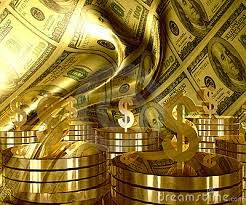- By Mr. Prithviraj Kothari, MD, RSBL
As the outlook for the U.S dollar remained upbeat, we saw a bearish sentiment in the market for gold. Many investors expect that an interest rate hike by the U.S Federal Reserve will come sometime in 2015 was responsible for this sentiment.
The Fed had stated that before it would tighten its policy, after it sees acceleration in wage growth. But at the same time the Fed had also made it clear in the January minutes in recent weeks that rate hikes could occur even if inflation is floundering. For now, as the Fed doesn’t consider the drop in inflation anything more than transitory, it’s unlikely that the wage figures ruffle too many feathers, at least for the U.S. Dollar.
Apart from the interest rate hike, there is also a great deal of uncertainty about the geopolitical and macroeconomic situation and gold continues to react to development in this regards.
The strong greenback has pushed gold prices below the key psychological level of $1,200 an ounce and has pushed the euro to a 12-year low
Both the euro and gold prices remain under significant pressure from the U.S. dollar.
The U.S. dollar has strengthened, particularly against the euro and that is negative for gold.
Though gold ended down for the week, it did show modest gains on Thursday afternoon although in euro terms it struck a near-one-month high following a speech from ECB president Mario Draghi on the bank’s QE programme.
An optimistic Draghi today outlined the ECB’s bond-purchasing plan that will begin on March 9. But he set a floor for bond purchases at the ECB’s deposit rate of -0.2 percent, following questions regarding to the extent to which the central bank will dabble with negative-yielding bonds.
As the week ended, gold prices fell to a two month low on Friday following a strong U.S non-farm payrolls report. Details are as following-
- US total non-farm payroll employment increased by 295,000 in February and the unemployment rate edged down to 5.5 percent from 5.7 percent, which was significantly better than the forecast for the addition of 240,000 jobs and a 5.6-percent unemployment rate.
- Labor reports over the next several months will take on added significance because the Federal Reserve is on the verge of raising interest rates.
This reading put added pressure on the Federal Reserve to raise interest rates in the near term.
By Friday afternoon prices had hit a session low of $1,162.90 an ounce and settled only marginally higher at $1,164.30, down 2.6% for the day. The gold ended the week at its lowest point since Dec. 1, shedding 4% since Monday.
Many cautious investors displayed a large scale pullout, looking for refuge in investment opportunities like stock, assuming bullish prospects for equity markets would continue in emerging markets like India.
Currently investment in equities looks more fruitful. Many investors are seeking shelter under this avenue as it is expected to give better returns than bullion; hence many investors sold their holding in gold to divert funds into equities in markets like India.
The jobs report definitely added fuel to fire for those who are expecting higher interest rates. Gold’s fall today shows that there is faith in the interest rate underpinning the dollar right now.
Strengthening dollar which is trading at its 11 year peak because of optimism in the US economy will be a strong factor for gold prices to come down in this month.
Although most of the market focus will revolve around the U.S. dollar and interest expectations, the two economic reports that will garner investors’ attention are-
- February retail sales
- Producer inflation data
The question now on everyone’s mind is just how low gold prices will go next week, in what is a quiet week for U.S. economic data. Most analysts expect that markets will spend most of next week preparing for the Federal Reserve monetary policy meeting on March 18.
Any hike by the Fed, which has kept rates near zero since 2008 to stimulate the U.S. economy, could hurt demand for bullion, a non-interest-bearing asset. If there is no physical demand then the market could be vulnerable.
Any hike by the Fed, which has kept rates near zero since 2008 to stimulate the U.S. economy, could hurt demand for bullion, a non-interest-bearing asset. If there is no physical demand then the market could be vulnerable.
The current strategy that market players should follow is “BUY ON DIPS”.
Following trade range could possibly give an idea for the same.
|
METAL
|
INTERNATIONAL
|
DOMESTIC
|
|
GOLD
|
$1130-$1200 an ounce
|
Rs.25,700- Rs.27,000 per 10gm
|
|
SILVER
|
$15.40-$ 17.00 an ounce
|
Rs.35,000- Rs.38,000 per kg
|
“The primary purpose of this blog by Prithviraj Kothari - MD, RSBL, is to educate the masses of the current happenings in the Bullion world.”
- Previous blog -
"Overall A Decent Budget For Gems & Jewellery Industry"
http://riddisiddhibullionsltd.blogspot.in/2015/02/overall-decent-budget-for-gems.html





